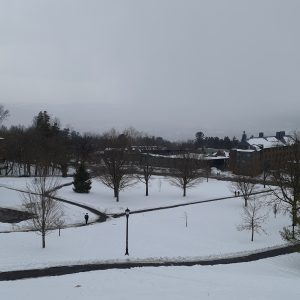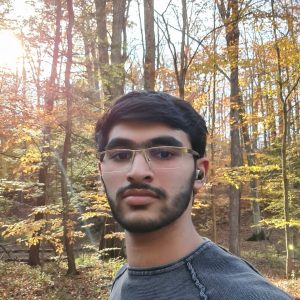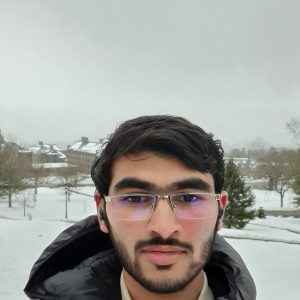Education
Undergraduate Studies - Cornell University
Cornell University is one of the eight ivy-leagues in the United States located at Ithaca, NY. I am currently a Senior studying Computer Science in the school of Arts & Sciences and would like to pursue my Master’s degree in the field of Computer Science at Cornell. I enjoy exploring Ithaca on my bike and love meeting students from around the world. I found my place within Cornell’s Muslim Life community as it made me feel at home with the Muslim students gathering for prayers and the religious activities/celebrations they organize.
With Cornell’s motto – “I would found an institution where any person can find instruction in any study.” – by the founder Ezra Cornell, I get to feed my intellectual curiosity by taking a wide variety of entertaining classes outside of my specialization such as cognitive science, genomics, or even vampire history in literature.
Courses I have taken at Cornell:
Computer Science Classes:
Programming and problem solving using Python. Emphasizes principles of software development, style, and testing. Topics include procedures and functions, iteration, recursion, arrays and vectors, strings, an operational model of procedure and function calls, algorithms, exceptions, object-oriented programming. Weekly labs provide guided practice on the computer, with staff present to help.
Outcome 1: Be fluent in the use of procedural statements -assignments, conditional statements, loops, method calls- and arrays. Be able to design, code, and test small Python programs that meet requirements expressed in English. This includes a basic understanding of top-down design.
Outcome 2: Understand the concepts of object-oriented programming as used in Python: classes, subclasses, inheritance, and overriding.
Outcome 3: Understand and apply the concepts of object-oriented programming as used in Python: classes, subclasses, inheritance, and overriding.
Outcome 4: Have knowledge of basic searching and sorting algorithms. Have knowledge of the basics of vector computation.
An intermediate introduction to the C++ programming language and the C/C++ standard libraries. Topics include basic statements, declarations, and types; stream I/O; user-defined classes and types; derived classes, inheritance, and object-oriented programming; exceptions and templates. Recommended for students who plan to take advanced courses in computer science that require familiarity with C++ or C.
UNIX and UNIX-like systems are increasingly being used on personal computers, mobile phones, web servers, and many other systems. They represent a wonderful family of programming environments useful both to computer scientists and to people in many other fields, such as computational biology and computational linguistics, in which data is naturally represented by strings. This course takes students from shell basics and piping, to regular-expression processing tools, to shell scripting and Python. Other topics to be covered include handling concurrent and remote resources, manipulating streams and files, and managing software installations.
Intermediate programming in a high-level language and introduction to computer science. Topics include object-oriented programming (classes, objects, subclasses, types), graphical user interfaces, algorithm analysis (asymptotic complexity, big “O” notation), recursion, testing, program correctness (loop invariants), searching/sorting, data structures (lists, trees, stacks, queues, heaps, search trees, hash tables, graphs), graph algorithms. Java is the principal programming language.
Outcome 1: Be fluent in the use of recursion and object-oriented programming concepts (e.g. classes, objects, inheritance, and interfaces).
Outcome 2: Be able to design and implement nontrivial Java programs (roughly 1000 lines of code), starting from an English language specification.
Outcome 3: Understand graphical user interfaces (GUIs), as expressed in Java.
Outcome 4: Understand asymptotic complexity of algorithms and be able to analyze programs to determine their running times.
Outcome 5: Understand basic data structures taught in the course and be able to implement them and use them in programs.
Meets weekly for one hour, in collaboration with CS 2110. Designed to enhance understanding of object-oriented programming, use of the application for writing Java programs, and other programming issues, as well as theoretical concepts that arise in CS 2110. The hour is spent in ways appropriate to the material under study -lecture, question-answer session, problem solving in small groups, one-on-one help, etc.
Balancing environmental, economic, and societal needs for a sustainable future encompasses problems of unprecedented size and complexity. Computing and information science can play an important role in addressing critical sustainability challenges faced by present and future generations. The goal of the course is to introduce students to a range of sustainability challenges and to computational methods that can help address such challenges. Sustainability topics include sustainable development, biodiversity and wildlife conservation, poverty mitigation, food security, renewable resources, energy, transportation, and climate change. In the context of these sustainability topics, the course will introduce students to mathematical and computational modeling techniques, algorithms, and statistical methods. The course is at the introductory undergraduate level. Students are expected to have basic knowledge of probability theory and calculus.
Covers the mathematics that underlies most of computer science. Topics include mathematical induction; logical proof; propositional and predicate calculus; combinatorics and discrete mathematics; some basic elements of basic probability theory; basic number theory; sets, functions, and relations; graphs; and finite-state machines. These topics are discussed in the context of applications to many areas of computer science, such as the RSA cryptosystem and web searching.
Advanced programming course that emphasizes functional programming techniques and data structures. Programming topics include recursive and higher-order procedures, models of programming language evaluation and compilation, type systems, and polymorphism. Data structures and algorithms covered include graph algorithms, balanced trees, memory heaps, and garbage collection. Also covers techniques for analyzing program performance and correctness.
Introduction to computer organization, systems programming and the hardware/ software interface. Topics include instruction sets, computer arithmetic, datapath design, data formats, addressing modes, memory hierarchies including caches and virtual memory, I/O devices, bus-based I/O systems, and multicore architectures. Students learn assembly language programming and design a pipelined RISC processor.
Introduction to modern database and data storage systems. Concepts covered include data models, query languages, database designs, storage structures, access methods, query processing and optimization, transaction management, and recovery in both relational and nonrelation data storage systems.
Introduction to the design of systems programs, with emphasis on multiprogrammed operating systems. Topics include concurrency, synchronization, deadlocks, memory management, protection, input-output methods, networking, file systems and security. The impact of network and distributed computing environments on operating systems is also discussed.
This course introduces the basic architectural and design principles of computer networking including the design of communication protocols, congestion control, routing and switching, Internet, data center networks and wireless networks.
Math Classes:
Topics include functions and graphs, limits and continuity, differentiation and integration of algebraic, trigonometric, inverse trig, logarithmic, and exponential functions; applications of differentiation, including graphing, max-min problems, tangent line approximation, implicit differentiation, and applications to the sciences; the mean value theorem; and antiderivatives, definite and indefinite integrals, the fundamental theorem of calculus, substitution in integration, the area under a curve. Graphing calculators are used, and their pitfalls are discussed, as applicable to the above topics.
Focuses on integration: applications, including volumes and arc length; techniques of integration, approximate integration with error estimates, improper integrals, differential equations (separation of variables, initial conditions, systems, some applications). Also covers infinite sequences and series: definition and tests for convergence, power series, Taylor series with remainder, and parametric equations.
Topics include vector algebra, linear transformations, matrices, determinants, orthogonality, eigenvalues, and eigenvectors. Applications are made to linear differential or difference equations. The lectures introduce students to formal proofs. Students are required to produce some proofs in their homework and on exams.
First-Year Writing Seminars:
“What are you afraid of?” may seem like an easy question to answer. But answering the question “Why are you afraid?” is often
more complicated than it seems. This course will explore works of fiction including books, films, and video games to consider what
has scared Western audiences for the last 350 years, and why. Why did the American colonies panic over witches? What fueled
monster stories throughout the 1800s? Why is modern horror so interested in zombies, found footage, and cults? And if these
ideas scare us so much, why do we keep coming back for more? Students will write critical analyses targeted toward various
audiences, examining the historical, cultural, and literary contexts that give the horror genre its enduring chills and thrills.
Why do we need vampires? And who gets to decide who the real vampires are? Even before Dracula took flight in 1897, we craved creatures of the night to give shape to our most hateful fears and leave a shadow over our most impossible dreams. Course readings will first unearth the vampire’s most famous origins in Dracula and Carmilla, excavating through criticism to unlock the secret of their danger, and their seductive appeal. From there, we will explore the vampire’s transformation through diverse contemporary works in literature as well as film and TV. In this class you will exorcise traces of humanity, transgression, and queerness in vampiric acts through critical analysis. You will hunt your own fears to spawn new vampire tales. Above all, you will confront that which is most monstrous, or by another turn, glorious.
Venturing Into Other Fields:
Course surveying the evolution of the universe from the Big Bang onwards: what happens in the first few minutes of the universe’s life; star formation, structure, and evolution; the physics of white dwarfs, neutron stars, and black holes; galaxy formation and structure; and cosmology. The roles of quantum physics, particle physics, and relativity in astrophysics are discussed.
Hundreds of planets around other stars have been discovered over the past two decades, and many more discoveries are sure to come. How are these discoveries made and what are the properties of these exoplanets and their systems? How exotic can we expect exoplanets to be? Is our solar system a typical planetary system or something unusual? How common are planets like Earth? How might we determine whether exoplanets can host life, or do host life? These and other issues related to planetary formation and evolution will be discussed.
This introduction to financial accounting covers the preparation of financial statements, from transactional analysis through journal entries to financial statement presentation. We will do in-depth analysis of receivables and payables, revenue and expenses, and major balance sheet items, such as inventory, investments, long term bonds, capital stock, and tangible and intangible assets. We will study preparation of the statement of cash flows using both the direct and indirect methods. Along the way we will introduce some of the concepts of financial statement analysis. We will also discuss ethics in accounting and business. Students will work in teams for some of the time. After successful completion of this course you will be prepared to take an intermediate accounting course.
It’s the world’s biggest treasure hunt! You might not know it but people all over the world have been hiding boxes of treasure all around your neighborhood. Come learn how to find their secret locations, what do do with them, and even make one of your own. This class will introduce students to a bit of map reading, use of a GPS in a natural setting. No experience is necessary.
Explanation and evaluation of how the price system operates in determining what goods are produced, how goods are produced, who receives income, and how the price system is modified and influenced by private organizations and government policy.
At the beginning of the 7th century, a new religion, Islam, appeared in Arabia and by the end of the century, Muslims had defeated the Byzantines and Persians and created an empire that stretched from Spain to India. For the next millennium, Islam glittered. Its caliphs, courts, and capitals were grander, more powerful, and more sophisticated than those of any medieval king, duke or prince. In this course, we will trace the emergence and development of Islamic civilization from the birth of Muhammad ca. 570 to the Mongol sack of Baghdad in 1258. We will read the Qur’an and listen to its recitation; examine the career of the Prophet Muhammad; follow the course of the Arab conquests; explore the nature of the conflict between Sunnis and Shi’is; learn about the five pillars of Islam, sharia law, theology, and Sufism; and assess the achievements of Muslim intellectuals in literature, art, architecture, science, and philosophy.
This course provides an introduction to the science of the mind. Everyone knows what it’s like to think and perceive, but this subjective experience provides little insight into how minds emerge from physical entities like brains. To address this issue, cognitive science integrates work from at least five disciplines: Psychology, Neuroscience, Computer Science, Linguistics, and Philosophy. This course introduces students to the insights these disciplines offer into the workings of the mind by exploring visual perception, attention, memory, learning, problem solving, language, and consciousness.
Do you have allergies to milk or wheat? Curious about your family ancestry? Does a relative suffer from a genetic disease, and you wonder if you might also be at risk? How will medicine be impacted by DNA testing? How will your own future, your quality of life, your decisions regarding children be impacted? What are the ethical, legal, and social challenges we all face as this genetic technology becomes rapidly available to anyone with as little as $99 and a saliva sample? This course is not just for those interested in science, it is a topic we all need to have a basic understanding of to ensure we are prepared for what is rapidly becoming part of all of our futures.
Outcome 1: To gain a basic knowledge of core concepts and methods in genomics, statistics, anthropology, law and social sciences which are relevant to genetic testing for ancestry and medical inference and diagnosis.
Outcome 2: To be able to discuss intelligently the ethical, legal and social implication (ELSI) challenges and debates regarding the growing use of genetics in medicine.
Outcome 3: To be able to critically read, interpret, evaluate and discuss new scientific as well as ELSI findings and debates regarding personal genomics and medicine.
Outcome 4: To gain an understanding of and appreciation for the diverse views that people have concerning the application of genetic testing to their life choices and views of their own racial/ethnic/social identity.
Recreational Biking is for those who want to explore Ithaca and Tompkins county under their own power by bike. Roads and bike paths will lead you right from campus to waterfalls, scenic views and ice cream! In addition to rides of 8-15 miles each day, you’ll learn how to take care of your bike and do some basic repairs. Rides will not be fast paced, but Ithaca has lots of hills so reasonable physical fitness and the ability to comfortably ride a bike are essential.
Familiarizes students from a range of disciplines with such contemporary issues in climatology as global warming and El Niño. Introduces the natural greenhouse effect, past climates, and observed and projected climate changes and impacts. Also covers natural climate variations (e.g., El Niño) and their consequences and predictability. Readings focus on recent scientific findings related to climate change.
Covers the science of interpersonal relationships. Examines the basic nature of human affectional bonds, including their functions and dynamics. Covers such topics as interpersonal attraction and mate selection, intimacy and commitment, love and sex, jealousy and loneliness, the neurobiology of affiliation and attachment, and the role of relationships in physical and psychological health.
PSYCH 3150
Course information provided by the Courses of Study 2021-2022.
Multidisciplinary discussion of the causes, effects, and treatments of human obesity. Topics include the biopsychology of eating behavior, the genetics of obesity, the role of activity and energy metabolism, the psychosocial determinants of obesity, anorexia nervosa, therapy and its effectiveness, and social discrimination.Multidisciplinary discussion of the causes, effects, and treatments of human obesity. Topics include the biopsychology of eating behavior, the genetics of obesity, the role of activity and energy metabolism, the psychosocial determinants of obesity, anorexia nervosa, therapy and its effectiveness, and social discrimination.
The course teaches statistical methods used in modeling risk in asset returns. Students in this course will be able to: identify time series dependency in selected financial data, analyze trade-off between risk and return of a portfolio, analyze tail risk in context of asset returns, and apply factor analysis in context of asset returns.
This Excel based course will emphasize applied decision making in the business world. This introductory course covers the theory behind decision making and applying analytic tools like Excel to various business scenarios. Understanding the value of such skills, this course will introduce students to methods used to navigate tools and applications, or typical business scenarios where such capabilities can be leveraged in business. Students dedicated to success in this course can expect to achieve a basic to intermediate understanding of many features available in Excel. Students will enjoy a thorough exposure to real world applications related to leveraging the tool and learn to demonstrate new analytic capabilities in a business environment.
High School - Applied Technology High School



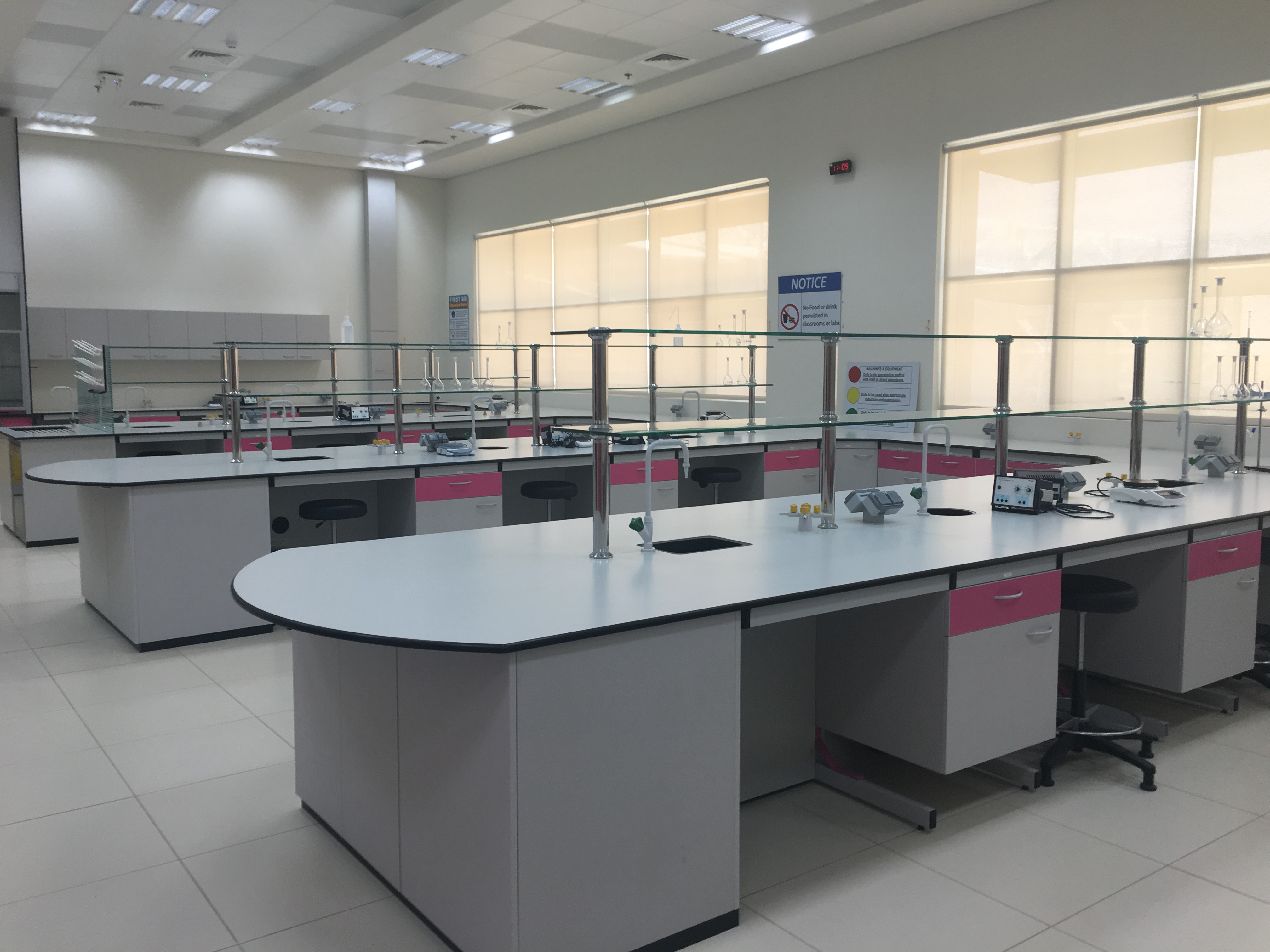
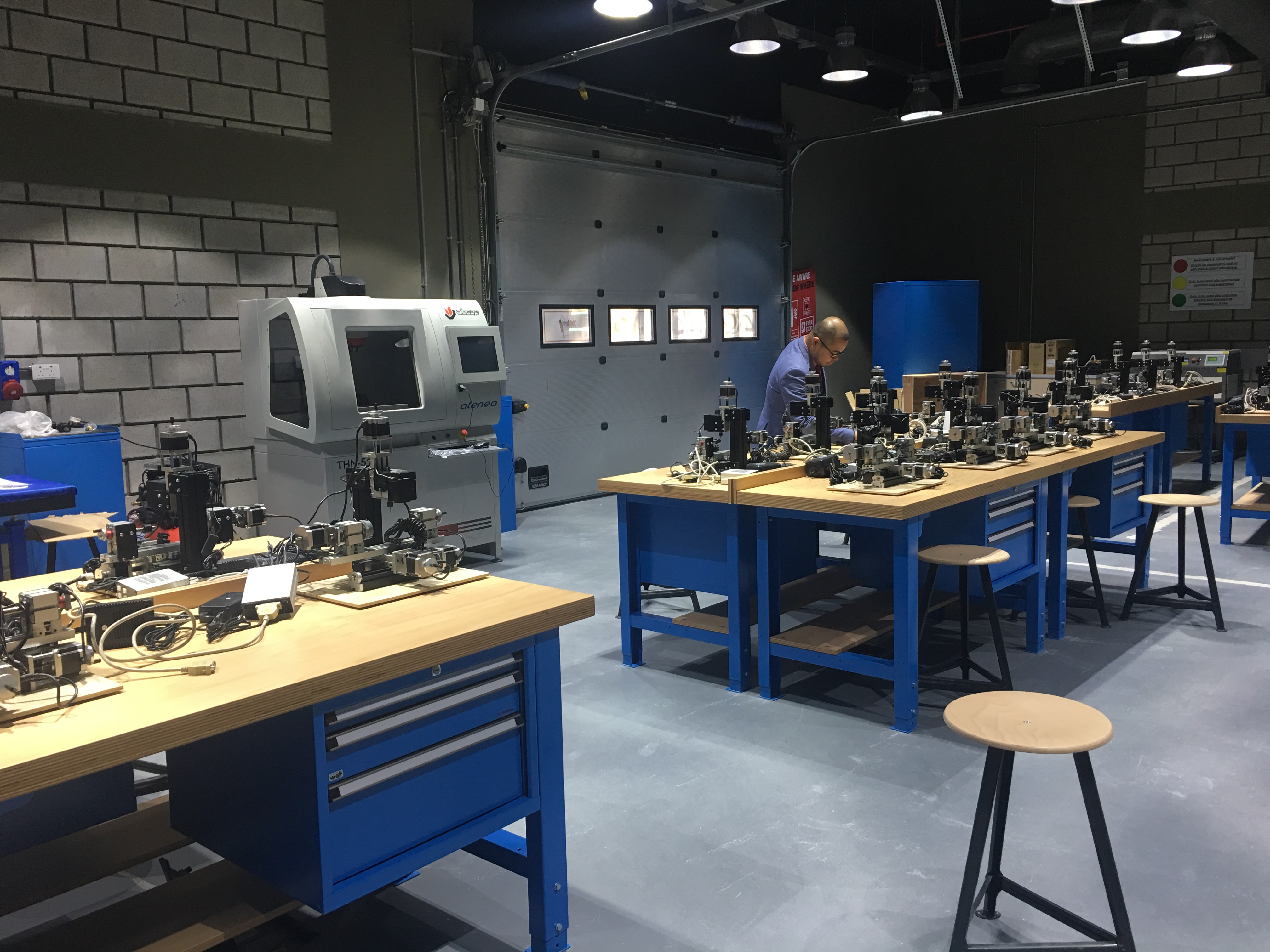

I joined Applied Technology High School in 2015 when I was in 8th grade. I switched to this school from a public school because it offered a plethora of opportunities for career development and advanced education through their rigorous curricula and engineering workshops. Additionally, instead of using physical books and papers, in this school, all the books, assignments, and communication with teachers was done through iPads. This was a completely new experience to me.
Compared to public schools where only 2 official examinations are given to students per year, this school had 6 examinations on top of the quizzes made by teachers. The issue was not with the number of exams but rather with the pace of the classes due to the dense material that we had to go through in a limited time period. Also, when studying for the tests, I had to accommodate time for studying at least a week before the exams so that I can feel comfortable with the possible types of questions that can be asked in the exam. However, this did not bother me since I learnt how to manage my time and be prudent at a younger age and as time passed I got accustomed to this school and maintaining my GPA became easy.
One major difference is that ATHS is STEM-based and therefore each trimester students were paired in groups and given a project outline on what to innovate and criteria to be reviewed. In my opinion, these projects helped students in brainstorming for ideas and in using their creative mind. However, at the same time, they were stressful because it was an additional burden to students. We had to not only come up with an idea and present it in a detailed manner but also construct a working prototype that met the criteria of the project. This resulted into multiple failures and eventually a successful prototype.
The school’s vision is to prepare UAE citizens to meet the needs of the country and since the United Arab Emirates has a shortage of local workers in the job force, the curriculum stays up to date with the job market in the UAE. With this, concentrations in different fields is possible from 9th grade. However, due to lack of resources and students at my campus, I was only given the choice of concentrating in the engineering field. Each year, we would have different courses in areas of mechanical engineering and electrical engineering. The examinations for these courses would be 50% theory and 50% practical so students can get some work experience and learn how to use different machinery and tools. I specialized in Electrical Engineering in my senior year and took the following courses in the field of engineering: Robotics, Electronic Principles, Electrical Installations, and AutoCAD.
What interested me more in this school was how often I got the opportunity to go out of my routinely day. For example, career fairs were held annually where major industrial companies – Nuclear Engineering, Petroleum, etc.. – from the surrounding regions would come to look for potential students to train and hire as full-time employees. Another example is that there are internship programs to study-abroad available during the seasonal holidays. There are two types of such internships, one is where a student has to pay for the internship while the other pays a student to intern at a certain corporation or institution. The latter type is for the top 10 students across all the ATHS campuses in the UAE. Therefore, it is highly competitive to get. This internship is for juniors during Spring break though what makes it even more attractive is the fact that it is in Paris, with Dassault Aviation. Additionally, this internship is fully funded by Dassault Aviation and students receive a diem per day. Thankfully, I got accepted into this internship and spent 14 days learning about the different stages of aircraft manufacturing.
At the start of my sophomore year, my career counselor recommended me to an early preparation program by Abu Dhabi Investment Authority which changed my life thereafter. This program assists students who are eager to pursue higher education abroad and exposes them to a student’s lifestyle in a foreign country. I have been to 2 summer programs in the US, one in Brewster Academy and another in University of Pennsylvania through ADIA. They arranged tours in different universities and taught us how to research on universities abroad. They also prepared their students for the English proficiency and SAT tests. This greatly helped me in achieving my desired scores and also applying to the universities where I genuinely am interested in.
